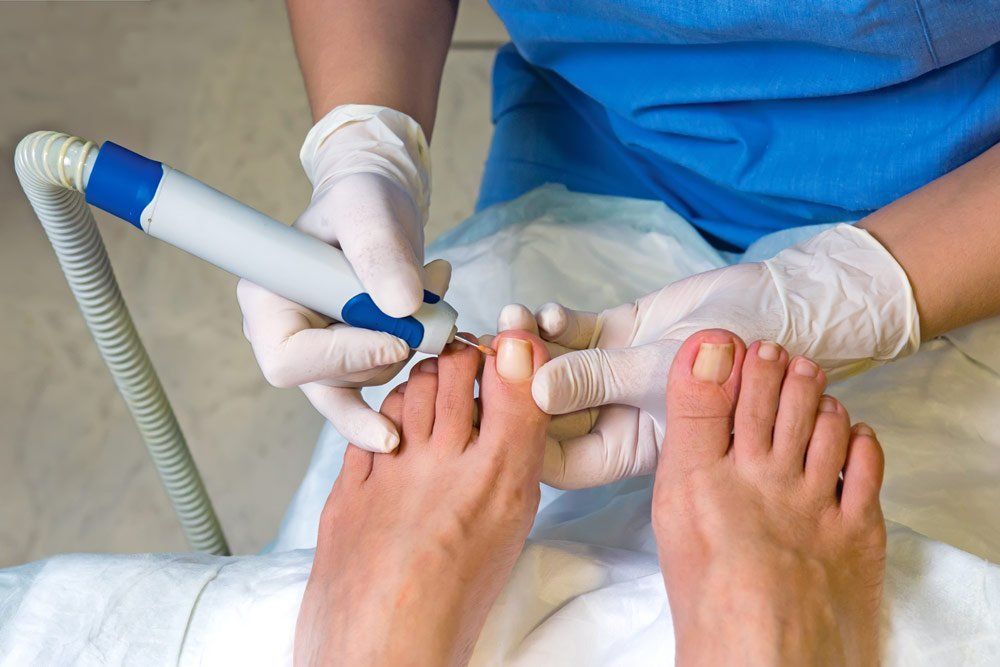Edward A. Behmer, DPM
Randall Tibbs, DPM

Edward A. Behmer, DPM
Randall Tibbs, DPM

Athlete's Foot: The Essentials
Athlete's foot is a common foot infection that can range in severity from mild to serious. Fortunately, you can overcome this infection if you know about how it’s caused, how to identify and treat it, and how to prevent it. Here is an overview of athlete's foot that might help you understand it.
Overview
Athlete's foot (tinea pedis) is a fungal infection that affects the skin on the feet. The fungus that causes athlete's foot can also spread to the toenails. If left untreated, athlete's foot can lead to more severe problems such as cellulitis (a bacterial infection of the skin) or toenail fungus.
Causes
Athlete's foot is a common fungal infection that affects the feet. The most common cause of athlete's foot is a type of fungus called tinea. This fungus is found on the skin and in the nail beds of people who have athlete's foot. The fungus thrives in warm, moist environments, such as locker rooms and showers. It can also be spread by sharing towels or shoes with an infected individual.
People at risk for developing athlete's foot include those who sweat heavily, wear tight-fitting shoes, or walk barefoot in public areas. Athlete's foot is more common in young people and men. People who frequent communal changerooms and share hygiene products like towels are also at risk of fungal infection that can lead to athlete's foot.
Symptoms
Some of the symptoms of athlete's foot include:
- Itching: The fungus that causes athlete's foot produces chemicals that irritate the skin, causing an intense itch.
- Redness: The irritation from the fungus also causes the skin to become red and inflamed.
- Scaling: As the fungus grows, it causes the skin to peel and form scales.
- Cracking: The skin can also crack and bleed as a result of the fungus.
- Peeling: Toenails can become discolored, thick, and crumbly and even peel away from the nail bed.
- Burning: Some people with athlete's foot also experience a burning sensation on their feet.
- Blistering: The fungus can spread from its initial infection part to the side of your feet and soles, which can develop blisters.
Diagnosis
A podiatrist may evaluate the symptoms of athlete's foot and order a fungal test, such as a skin lesion potassium hydroxide exam for further proof.
The test uses a small sample of skin taken from the affected area and applies a drop of potassium hydroxide (KOH) solution to it. The KOH dissolves the skin cells and allows the examiner to view the structures beneath them. The KOH test can help confirm the diagnosis of athlete's foot and rule out other possible causes of foot infections.
Prevention
The most critical measure to prevent athlete's foot is hygiene. You should keep your feet clean and dry by washing them daily with soap and water and drying them thoroughly, especially between the toes. Also, wash your socks and bedding in hot water, at least 140℉. You should wear shoes that fit well and allow the feet to breathe. Do not walk barefoot in public places like locker rooms and pool areas.
You should wear shoes that fit well and allow the feet to breathe. Do not walk barefoot in public places like locker rooms and pool areas.
If you exhibit the symptoms of athlete's foot, you should visit a podiatrist to treat it promptly and effectively, which will curb its spread to other individuals.
Treatment and Management
Your doctor might recommend over-the-counter (OTC) medications. If OTC medication does not work, you can opt for prescription-strength treatments. Some alternative home remedies like tea tree oil and diluted vinegar can treat or manage symptoms.
A podiatrist is your best bet to manage athlete's foot should it inflict you. Contact us today at Huntsville Podiatry Center, PC, for medical assessment and treatment.
BUSINESS HOURS
- Mon - Thu
- -
- Friday
- -
- Sat - Sun
- Closed







